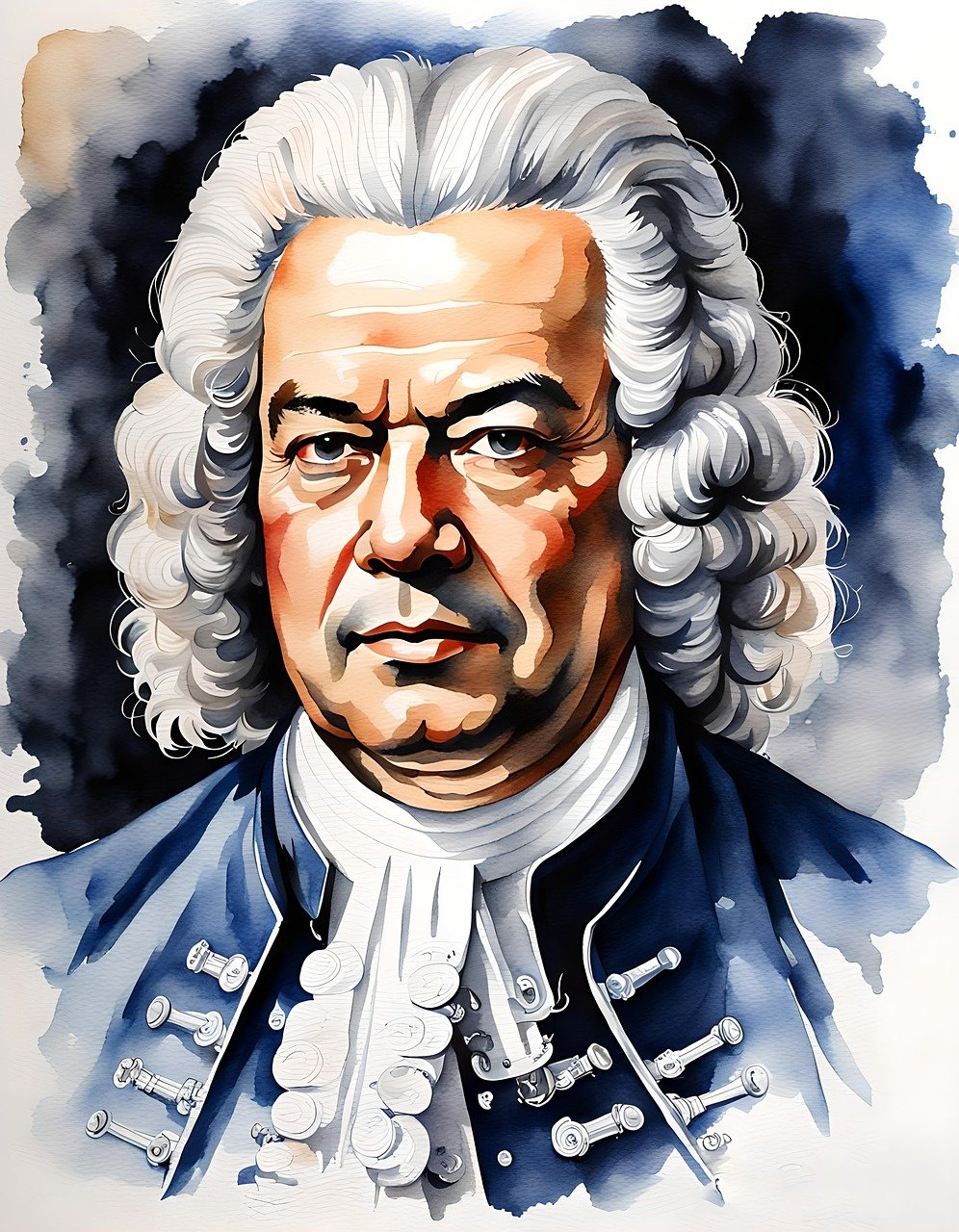The Life of the Amazing Johann Sebastian Bach
Born 1685-1750 in the town of Eisenach in Thuringia, Germany in March. He was the last of 8 children. He grew up in a musical family. His father, Johann Ambrosius, was a talented string player. Several of his uncles were organists. One of his cousins, Johann Christoph Bach, was a renowned composer.
Johann Sebastian Bach lost his parents at the age of 9. Bach’s father died 9 months after his mother. At the age of 9, he went to live with his eldest brother, Christoph who was an organist. He learned to play the organ and sang in the church choir. At the age of 15, he won a place at the prestigious Michaeliskirche school due to his great vocal abilities.
Bach finished his education at 17 and started earning a living. He became a church organist in 1703 in Arnstadt, then Muhlhausen, both towns in Thuringia. He was a troublesome employee who took a long leave of absence in Lubeck. Bach traveled to hear performances by Dieterich Buxtehude. Critics claimed that his accompaniments to chorales were far too elaborate.
Bach had a wide range of duties, which distracted him from the organ and composition. He lacked patience when it came up to musicians with poor quality of performance and talent.
His organ skills and quality of music started gaining more popularity and attracting attention. His first composition was the cantata Gott ist mein Konig (God is My King) printed in 1707. Johann’s most well-known organ works “The Toccata and Fugue in D minor” may have been composed around this time.
In 1707 he married his second cousin, Maria Barbara. They had 7 children, but only 4 survived infancy. Most of these births took place at the ducal court at Weimar.
Bach’s reputation as a virtuoso has spread around Germany. In 1708, he took a position as chamber musician in the court of Duke Wilhelm Ernst of Saxe-Weimer. Bach never felt comfortable working for Duke Wilhelm, even though he was better compensated. In 1717, he asked for permission to accept the post of musical director at another German court. The Duck imprisoned Bach for a month for being disloyal to him.
JSB took a new position under Prince Leopold of Kothen. He shifted his focus from organ and cantata music to harpsichord, violin, and cello.
Bach wrote some of his most popular masterpieces at Kothen, such as Concerto for Two Violins, the Suites for Solo Cello, the Sonatas and Partitas for Solo Violin, The Brandenburg Concertos (six works based on the Italian Concerto Grosso Style) in which soloists play together with a small orchestra. He wrote them in 1721. In 1722 he completed the first book of the Well-Tempered Clavier, 24 preludes and fugues in the full range of major and minor keys.
In 1720 his wife Maria Barbara fell ill and died. Bach married Anna Magdalena Wulcken, a 20-year-old singer a year later.
Bach started looking for new opportunities after the prince married a woman who wasn’t very interested in music. In 1723 a vacancy opened up in Leipzig for a ‘cantor’ who would be responsible for the music in major churches in the city. During that time the prominent composer Georg Philipp Telemann was trying to recruit an ideal candidate for the job. After a failed attempt, Bach was offered the job. Even though the city authorities were reluctant to hire Bach. One councilor put it, “when the best man cannot be obtained, mediocre ones have to be accepted”. Bach had to make a promise that his music would not be too long, nor be “operatic” in style.
He was responsible for the music of 4 churches, and he wrote one new cantata per week. Some of his best keyboard pieces are the French and English Suites. In 1729 he became director of Leipzig’s Collegium Musicum. There he staged weekly performances of secular music at the Zimmerman coffeehouse.
Home and Family Life
In Bach’s home there was a spirit of lots of music and performing. He composed music that was suitable for his children to perform. Anna Magdalena gave birth to 13 children between 1723-1742. Only 6 survived infancy. Bach’s productivity didn’t seem to be affected much by the losses of his children. He continues to write music. His relationships with his employees in Leipzig were difficult. Due to pay, status, and also the nonmusical duties he had to perform, which he didn’t always do.
In 1734 Bach secured a very prestigious title as course composer to Saxony in Dresden.
He wrote his famous Goldberg Variations to help the count sleep at night. The Russian ambassador, Count Keyserlingk, asked him to write a soothing piece of music.
Bach didn’t follow musical fashions. He stuck with his old-fashioned intertwining of two or more melodic lines. People criticized him for his confusing style. In 1747, when he was in Berlin, the Prussian king, Frederick the Great presented Bach an original theme. Bach improvised a three-part fugue at the pianoforte.
In 1749, Bach went blind and died the following year of diabetes. He was buried in an unmarked grave. By the end of the 19th century after his music became more known, his body was reburied in a stone sarcophagus in Leipzig’s Thomaskirche.
Bach’s obituary says: “Bach was the most prodigious organist and keyboard playing that there has ever been.
